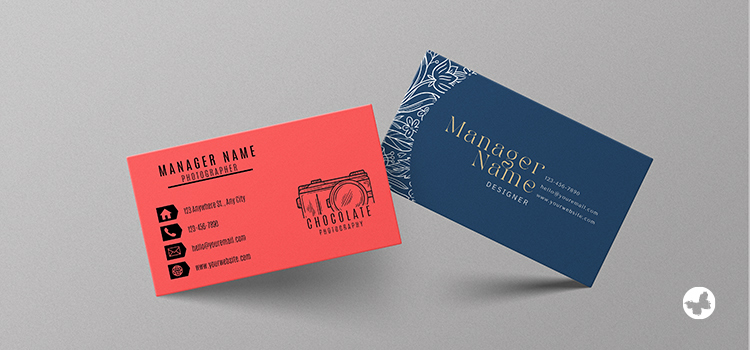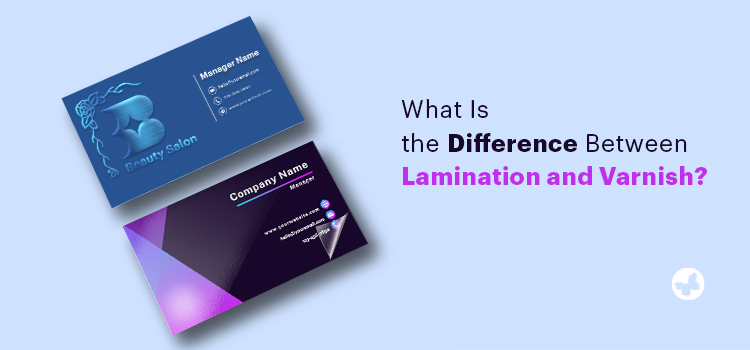When it comes to print finishing techniques, two commonly used options are varnish and lamination. Both techniques can enhance the appearance and durability of print products, but they have distinct characteristics and applications. But which one is more useful, varnish or lamination?
In this blog post, we will explore the differences between lamination and varnish, particularly focusing on UV varnish vs. gloss lamination and matte lamination vs. matte varnish. Keep reading to find out which one is better for your marketing goals!
Contents
What Is the Difference Between Varnish and Lamination
Although both varnish and lamination are used to improve and preserve printed materials, their uses and characteristics are very different. A plastic film is adhered to the material during lamination, whereas varnish is a liquid coating that is applied to the surface. Let’s examine these two finishing techniques in more detail:
Varnish
The procedure consists of applying a liquid coating—typically done by a printing press—and then letting it dry. This method offers an outer layer of protection against smudges, scratches, and moisture. It also offers a range of visual choices and can be glossy, matte, or textured. You can use this technique for signage, business cards, packaging, direct mail, and posters where both aesthetic appeal and a protective layer are required. In general, it is less expensive than lamination.
Lamination
The procedure entails applying pressure and heat to fuse a thin plastic film, such as polyester or polypropylene, to the printed material. This method offers a stronger and longer-lasting protection layer against physical harm, tearing, and moisture. You can choose a glossy, matte, or even soft-touch appearance. It is frequently used for materials that need to be extremely durable and protected, such as promotional materials, business cards, outdoor signs, and menus. Its cost is usually higher than that of varnish.
UV Varnish vs. Gloss Lamination

When choosing between UV varnish and gloss lamination, it is important to consider the desired level of glossiness, the printing budget, and the specific application of the printed products. So, let us review them case by case.
UV Varnish
UV varnish is a liquid coating that is applied to the surface of a printed piece and then cured using ultraviolet light. It offers a glossy finish that intensifies the colours and contrasts of the printed design. UV varnish protects against scratches and water damage, making it suitable for business cards, flyers, labels, and various promotional materials. It has a relatively lower cost compared to gloss lamination and can be eco-friendly if water-based varnish is used.
Gloss Lamination
Gloss lamination, on the other hand, involves applying a film over the printed piece that results in a glossy surface. It enhances the colours and contrasts of the design, providing a premium and professional finish. Gloss lamination offers high durability and protection against scratches and water damage. With its high reflectivity, it is suitable for brochures, catalogues, and packaging. However, it is worth noting that gloss lamination usually comes at a higher cost compared to UV varnish.
Read more: The Difference Between Gloss and Matte Paper Finishing
Matte Lamination vs. Matte Varnish

Choosing between matte lamination and matte varnish depends on the desired level of matte finish, the printing budget, and the specific application of the printed materials. Let us take a closer look.
Matte Lamination
Matte lamination creates a smooth and matte surface on the printed piece. It provides a subtle enhancement of colours and contrasts, giving a sophisticated look. Matte lamination suits high-end products and luxury goods well due to its high durability and resistance to scratches and water damage. However, it is important to note that matte lamination generally comes at a relatively higher cost compared to matte varnish.
Matte Varnish
Matte varnish, similar to its gloss counterpart, is a liquid coating applied to the printed piece. It results in a matte finish, adding a subtle touch of richness and depth to the design. Matte varnish provides decent durability and protection against scratches and water damage. It commonly achieves a smoother and more subdued appearance in packaging. In terms of cost, matte varnish is generally more cost-effective compared to matte lamination.
The features of various varnish types and lamination techniques are compared in the following table to help you better understand the differences between these finishes.
| Matte Lamination | Gloss Lamination | UV Varnish | Matte Varnish | |
| Glossiness | Matte surface | Glossy surface | Glossy finish | Matte finish |
| Texture | Smooth | Smooth | Smooth | Smooth |
| Durability | High | High | Medium | Medium |
| Protection | Resistant to scratches and water damage | Resistant to scratches and water damage | Resistant to scratches and water damage | Resistant to scratches and water damage |
| Enhancements | A subtle enhancement of colours and contrasts | Intensifies colours and contrasts | Intensifies colours and contrasts | A subtle enhancement of colours and contrasts |
| Reflectivity | Low | High | Low | Low |
| Application | Applied as a film over the printed piece | Applied as a film over the printed piece | Applied as a liquid coating over the printed piece | Applied as a liquid coating over the printed piece |
| Drying Time | Instantaneous | Instantaneous | Requires curing under UV light | Requires drying time |
| Touch and Feel | Smooth and slightly textured | Smooth and glossy | Smooth and glossy | Smooth and matte |
| Printing Cost | Relatively higher cost | Relatively higher cost | Relatively lower cost | Relatively lower cost |
| Sustainability | Non-biodegradable | Non-biodegradable | It can be eco-friendly if the varnish is water-based | It can be eco-friendly if the varnish is water-based |
| Recommended Use | High-end products, luxury goods, business cards | Brochures, catalogues, packaging | Business cards, flyers, labels | Packaging, promotional materials |
*Please note that the specific characteristics and recommended use may vary depending on the manufacturer and specific materials used.
Conclusion
To sum up, lamination and varnish are both valuable print finishing techniques that can enhance the appearance and durability of printed materials. UV varnish and gloss lamination offer glossy finishes with an intensification of colours and contrasts, while matte lamination and matte varnish provide a sophisticated and elegant matte appearance. Understanding the differences between these techniques can help you make informed decisions when selecting the right finish for your printed materials.
Remember, whether you opt for UV varnish, gloss lamination, matte lamination, or matte varnish, each technique has its unique benefits and applications. You can consult with the print experts of ButterflyGP to determine the best option that suits your specific needs, budget, and desired outcome. Working with our professional team guarantees your success in marketing results.
